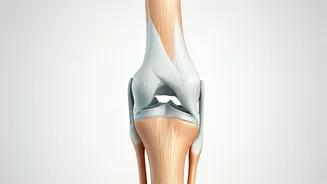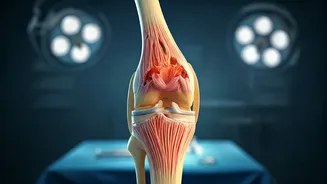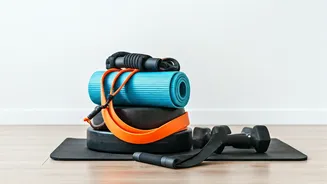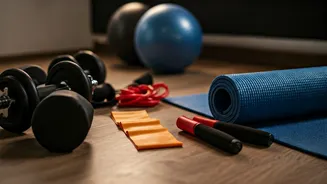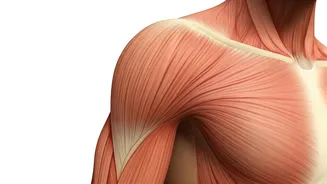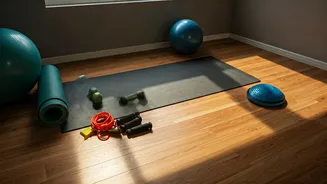High-Impact Cardio Danger
High-impact cardio exercises, such as running and jumping jacks, frequently top the list of workouts that can silently inflict damage on your joints. The
repetitive pounding on hard surfaces can be particularly tough on the knees, ankles, and hips. The impact of each foot strike sends shockwaves through the joints, potentially leading to cartilage damage, inflammation, and even osteoarthritis over time. Running on concrete, for instance, exacerbates the impact compared to softer surfaces like a track or trail. Similarly, jumping jacks, while seemingly harmless, place considerable stress on the ankles and knees. The risk amplifies with factors such as body weight, improper form, and insufficient warm-up. Recognizing these risks is the first step toward modifying workouts to protect your joints. Consider lower-impact alternatives like swimming, cycling, or brisk walking to maintain cardiovascular health without the excessive strain.
Weight Training Pitfalls
Weight training, when performed incorrectly, poses a significant threat to joint health. Lifting weights, whether free weights or machines, introduces a mechanical stress that, if not managed, can lead to injury. One common mistake is using improper form, which can put undue pressure on joints. For instance, bending the knees too far during squats can strain the knee joints, while rounding the back during deadlifts can damage the spine. Another factor is overloading. Lifting weights that are too heavy for your current strength level increases the risk of sprains, strains, and chronic joint issues. It's crucial to prioritize proper technique and gradually increase weight as you gain strength. Warm-up thoroughly before weight training to prepare your joints and muscles for the activity. Consider using lighter weights with more repetitions and incorporating exercises that strengthen the muscles around the joints for added support.
Repetitive Movement Risks
Many workout routines involve repetitive movements that can cause overuse injuries. Activities like swimming, cycling, and certain yoga poses, when performed repeatedly, can lead to inflammation, tendonitis, and even stress fractures. In swimming, repetitive strokes can strain the shoulder joints, causing rotator cuff injuries or impingement. Cycling, especially without proper bike fitting, can put pressure on the knees and hips. Specific yoga poses, if executed incorrectly or held for extended periods, may compromise joint stability. The key to mitigating these risks is to diversify your workouts, ensuring that you don't engage in the same repetitive motions daily. Incorporate rest days to allow joints to recover. Also, focus on proper form and alignment. If you're experiencing pain, modify the exercise or seek guidance from a qualified fitness professional or physical therapist to ensure your technique is safe and effective.
Poor Flexibility and Stability
Inadequate flexibility and poor core stability can significantly increase the risk of joint damage during exercise. Stiff muscles and limited ranges of motion place extra strain on joints, making them more susceptible to injury. For example, tight hamstrings and hip flexors can contribute to lower back pain. A lack of core stability can compromise posture during exercises, placing excessive stress on the spine and other joints. Improving flexibility and stability involves regular stretching, yoga, and core-strengthening exercises. Incorporate dynamic stretches before workouts to improve your range of motion and static stretches afterward to enhance flexibility. Strengthen your core muscles through planks, bridges, and other exercises to improve spinal stability and support your joints. This proactive approach helps your joints handle the physical demands of exercise safely and efficiently.
Ignoring Pain Signals
One of the most detrimental practices is ignoring pain signals during exercise. Pain is your body's way of signaling that something is wrong, and ignoring it can lead to further joint damage and chronic issues. Continuing to exercise through pain, especially in the joints, can exacerbate existing injuries and potentially create new ones. Recognizing your body's limits is essential. If you experience pain during a workout, stop immediately and assess the cause. It could be due to improper form, excessive intensity, or an underlying injury. Rest is often the most effective solution for minor pain. Consider modifying the exercise, reducing the intensity, or consulting with a healthcare professional to identify the root cause. Ignoring pain and pushing through can turn a minor ache into a chronic problem, significantly impacting your long-term joint health and overall well-being. Always listen to your body and prioritize its signals.
